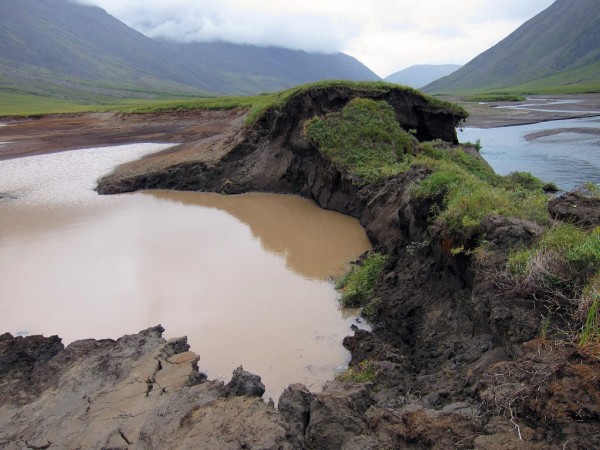By Dane Lorica, | November 08, 2016

Melting permafrostS may release potentially fatal microorganisms. (Flickr)
Several reports of deaths due to anthrax have been recorded for the past months and in different parts of the globe.
Last summer, a 12-year-old boy was killed by the spore-forming bacterium in Siberia. Meanwhile, 20 individuals from Yamal Peninsula tested positive for the disease, another 100 individuals are suspected to have acquired the infection and were hospitalized. Apart from human deaths, the same microbe also killed 2,300 reindeers. Scientists have found out that the melting permafrost resulted in the release of this bacterial infection.
Like Us on Facebook
Reports from Russian officials reveal that melted frozen soil layer relinquish the once immobile organism. The transfer of Bacillus anthracis spores to parts of water and soil will eventually reach the food supply. The recently reported cases were the first in the area in a span of 75 years.
The thawing of permafrosts as a result of global warming predisposes us to the emergence of different potentially fatal and infectious microbes. However, it should be noted that B. anthracis is a common soil inhabitant and may cause outbreaks even without the melting of frozen grounds.
This event has already been predicted in a paper published in Global Health Action in 2011 stating that "as a consequence of permafrost melting, the vectors of deadly infections of the 18th and 19th centuries may come back, especially near the cemeteries where the victims of these infections were buried."
Significant changes in the depth of melted permafrost have been observed in the past years. In fact, at least 50 centimeters of frozen soil melt every summer season in Siberia. Scientists also explained that not all microbes are capable of surviving in very low temperatures for a long time.
Jean-Michel Claverie, the head of the Mediterranean Institute of Microbiology, said that "B. anthracis are special because they are sporulating bacteria." These spores are resistant to cold temperature making the bacteria able survive even beyond a century.
Other studies showing the possibility of infectious microorganisms returning to infect humans were published in 2014 and 2015 by Claverie and Chantal Abergel, who discovered Mollivirus sibrricumcan and Pithobirus sibericum in a 30,000-year-old permafrost in Siberia. Both viruses cause diseases only to amoebas. However, this may indicate that preserved microbes causing smallpox and Spanish flu may be released from thawed permafrosts.
Claverie stated, "there are hints that Neandertals and Denisovans could have settled in Northern Siberia and were plagued by various viral diseases, some of which we know, like smallpox and some others that might have disappeared."
Scientists know only little about these microorganisms that cause potentially fatal diseases. This has triggered worry as the effects of these microbes being released from melting permafrosts is unknown.
-
Use of Coronavirus Pandemic Drones Raises Privacy Concerns: Drones Spread Fear, Local Officials Say

-
Coronavirus Hampers The Delivery Of Lockheed Martin F-35 Stealth Fighters For 2020

-
Instagram Speeds Up Plans to Add Account Memorialization Feature Due to COVID-19 Deaths

-
NASA: Perseverance Plans to Bring 'Mars Rock' to Earth in 2031

-
600 Dead And 3,000 In The Hospital as Iranians Believed Drinking High-Concentrations of Alcohol Can Cure The Coronavirus

-
600 Dead And 3,000 In The Hospital as Iranians Believed Drinking High-Concentrations of Alcohol Can Cure The Coronavirus

-
COVID-19: Doctors, Nurses Use Virtual Reality to Learn New Skills in Treating Coronavirus Patients







